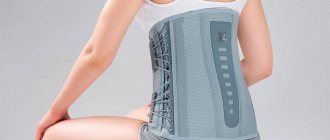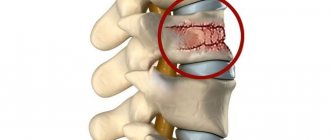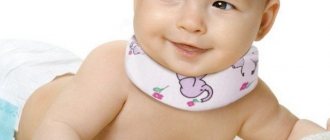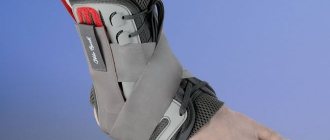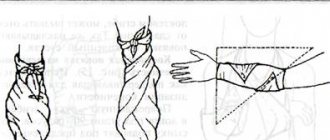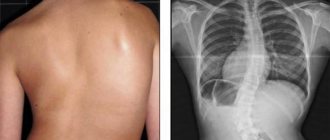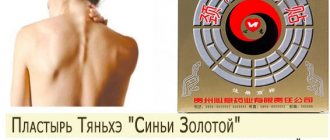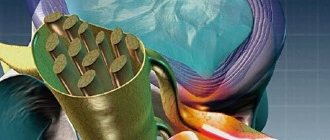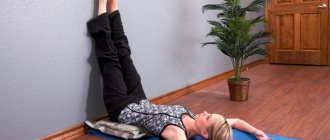- home
- Articles
- How to wear an orthopedic spine corset correctly?
Even with small but prolonged physical activity, a person experiences discomfort and pain in the back. The less training you have, the faster fatigue sets in. The point here is the spine, which takes on the brunt of the work. In order not to harm ourselves, we invent different devices, look for easier ways to do more and get tired less. But for such cases there is a special accessory - a spinal corset.
The principle of operation of the corset
Orthopedic corsets
They are classified as medical supplies, as they are most often used for the treatment and prevention of pain in the back and lower back. Essentially, it is a rigid or semi-rigid belt that tightly fits the back of the body from the cervical to lumbar vertebrae. With its help you can form a beautiful, stately posture.
Corsets are made from natural materials that fit the body and external synthetic composites. Some rigid bandages have metal plates inserted, while semi-rigid ones have elastic plastic ones. Using these corsets:
- maintain anatomically correct posture;
- relieve tension from the lower back and sacrum;
- prevent muscle spasms;
- eliminate spinal misalignment;
- restore the proper functioning of internal organs;
- prevent excessive compression of intervertebral nerve endings.
This is the principle of operation of a back corset. But in order to achieve the desired effect after treatment and subsequent physical activity, bandages should be selected in accordance with the recommendations of a medical specialist after examination for contraindications. There are cases when a person is diagnosed with a complex pathology, and he needs a custom-made corset
.
Is it possible to get used to a posture corrector?
When using various orthopedic products for the back, the orthopedic doctor carefully considers the course of wear and time intervals for use. This is necessary to create a therapeutic effect without the body becoming accustomed to outside help. Therefore, by visiting a competent specialist, you minimize the risk of addiction, weakening of your own muscle tone, and aggravation of defects.
When using a back corset for the first time, you may experience a significant feeling of discomfort, tightness, and unnatural position of the body, muscles, and joints. This is where this type of product begins to work effectively.
In what cases is it prescribed: indications and contraindications
In medical institutions, during examinations, specialists look at how a person behaves under the influence of various loads, their duration, and how internal organs work. The doctor prescribes a certain type of corset in cases where:
- the ligamentous apparatus is weakened due to other diseases, such as: hernia, osteochondrosis, spondylosis;
- stoop or scoliosis is clearly expressed;
- rehabilitation after surgical treatment is necessary;
- congenital disorders of the musculoskeletal system were identified;
- back injuries occurred;
- prevention is required for rapid fatigue.
If a person leads a sedentary lifestyle, then even with small loads he will feel rapid fatigue. In such cases, one corset will be ineffective, so it is recommended to alternate passive work with gymnastic exercises.
But there are also contraindications when you cannot wear an orthopedic corset, namely:
- in case of skin diseases, when redness, smudges, and itching may form at the site of the corset;
- during pregnancy, after childbirth, during breastfeeding - during this period special prenatal and postnatal bandages are used.
- under the age of 14;
- if there are wounds in the areas where the belt and fastenings fit.
All such factors can be obvious, and a person cannot physically use the corset, as well as hidden, which are revealed only during a medical examination.
How long to wear a posture corrector?
- First of all, you should remember that reclinators of various modifications are medical devices for correcting defects and they must be worn strictly as prescribed by doctors.
- If the corrector is intended for prevention, then the starting period of wear should begin with 30 minutes a day, gradually increasing the interval to 3-5 hours of continuous use. It is this method that will allow the muscles and vertebrae to carefully, as naturally and anatomically as possible take their natural position.
- To obtain the expected therapeutic effect, it is necessary to use the product for at least 3-6 months in a row.
If during use you are bothered by any pain, skin irritation, numbness of the limbs or other negative sensations, then you should definitely go to the hospital for further clarification about use. Listen to your body and do not harm it.
How to put on a corset: instructions
After treatment of an injury, before exercise therapy, after a massage, you should know how to properly put on an orthopedic corset. This is done in the following sequence:
- Unfasten the ties from the transverse belt and place it on a couch or a hard stand;
- lie down on it with your back;
- tighten the belt just above the lower back to the navel so that it is located between the rigid inserts;
- fasten the clasp in front so that the belt is fixed, but does not dangle;
- slowly rise up and adjust the corset along its entire length.
The fit of the corset to the body should be the same over the entire area. After wearing the bandage for three hours, it must be removed and the body allowed to rest for an hour. Then it can be put on again at the same intervals.
Where to order a Chenault corset in Krasnoyarsk?
You can order an orthopedic product for the spine according to individual measurements at an orthopedic hospital in the city and region. You receive a product with a state quality guarantee. If the pharmacy closest to your home does not have the product you need, simply order it at a discount online through the online pharmacy 24farmacia.ru and pick it up at the network pharmacy you need or order home delivery.
Take care of the health of your loved ones - buy orthopedic corsets in Krasnoyarsk at the Pharmacia online pharmacy at better prices.
How to wear it correctly: general rules and recommendations
It would be wrong to assume that by putting on a corset, all problems with the spine will immediately disappear. But, if you decide to purchase it, then we will give a few general rules on how to wear an orthopedic corset correctly:
- do not use for more than three hours;
- do not over-tighten the fasteners;
- take it off before going to bed.
Tightened fastenings impede blood flow, which may result in bluish skin. With constant use of the belt, the muscles get used to it and atrophy from lack of mobility. A sign of improper wearing is pulsation in the lower abdomen if the fastenings are tightly tightened, and abrasion of the skin when the bandage moves freely.
Main characteristics
The features of this type of bandage include a medium degree - quite rigid, but without pronounced discomfort - fixation of 3 parts of the spine at once: the lower thoracic, waist and lumbosacral.
Among the advantages are:
- low degree of deformation;
- ease of movement;
- the ability to individually “adjust” the size and stiffness due to the presence of ribs;
- many sizes;
- excellent quality of materials;
- compactness and high degree of fit, which ensures comfortable wearing.
Before choosing an orthopedic belt for the back, you need to make sure that the purpose of use corresponds to its intended purpose, that is, the diagnosis, type of therapy, prevention and rehabilitation must be indicated in the indications for use.
Relative disadvantages include:
- specific care (delicate hand wash without spinning or aggressive detergents, drying naturally away from heating devices);
- Rarely occurring individual intolerance to materials.
What happens if you wear it incorrectly?
The first sign of wearing a corset incorrectly is a deterioration in health. The belt cannot be worn for more than the time prescribed by the doctor. Otherwise, the effect of treatment is reduced to zero, and other harm to health can be caused.
Wearing a corset incorrectly usually not only does not give a positive therapeutic result, but also further aggravates the problem with the spine. It may even be necessary to treat with other methods.
Select the correct bandage and wear it as recommended by a specialist. Only with proper use of the corset will you achieve beautiful posture and excellent performance.
Return to list
Indications for use
First of all, we want to say that buying bandages at a pharmacy is not difficult. Orthopedic products are intended for people with various pathological conditions of the spine. If a problem arises, it is recommended to consult a doctor who, after conducting research, will select the most suitable one. Indications for the use of such funds are:
- Osteoporosis,
- Various degrees of curvature of the spinal column,
- Osteochondrosis,
- Hernias between the vertebrae,
- Problems with posture,
- Serious physical stress on the back,
- Impaired tone and poorly developed back muscles,
- Predisposition to various curvatures of the spinal column,
- Congenital diseases of the spine,
- Prevention of traumatic injuries in certain sports,
- Pain syndrome in the last months of pregnancy.
You need to remember that it should not create increased pressure. Otherwise, the patient's condition may worsen.
Work technology
The Bauerfeind LordoLoc lumbosacral corset moderately fixes the necessary part, and also relieves the spine in various back pathologies. The design of the orthosis includes:
- Four medium-hard aluminum inserts at the rear of the product. They simultaneously activate and relieve the work of muscles, relieve tension and support the back from the outside.
- Two highly elastic bands at the front of the orthosis help regulate the fit of the product to the body, as well as intra-abdominal pressure.
- Abdominal compression (the pressure of the orthosis on the abdomen) stabilizes the spinal region.
The elastic knitted material from which the corset is made has a massaging effect during movement. This allows you to restore and activate the normal functioning of the back muscles. As a result of wearing a corset, discomfort and pain disappear, and freedom of movement increases.
special instructions
There are no special skills or training required to use the Bauerfeind LordoLoc. Thanks to the additional elastic straps, it is very easy to put on. You should know that it is most convenient to do this from a lying position. Due to the characteristics of the material, Lordoloc can be worn under clothing.
The orthosis should be used no more than six hours a day. With longer use, atrophy of the lumbar muscles is possible, causing the spine to lose its supporting function.
The general course of therapy is determined by a specialist. As a rule, for prevention it is enough to wear a corset 5-6 times a month. You need to know that you cannot sleep in an orthosis.
You should also remove the device regularly and check your body for swelling or irritation. To prevent injury to the skin, it is recommended to wear the product over seamless cotton clothing. To prevent blood stagnation and muscle weakness in the corset area, you need to perform a light self-massage each time after removing it.
Why material and details are important
A high-quality modern corset is a complex design that should work for several months: provide a given level of support and at the same time be comfortable for the person wearing it. Otherwise there will be no therapeutic effect.
Completely natural materials, such as cotton, are not suitable for such tasks, so corsets are created from technologically blended fabrics. Ideally, the materials should be hypoallergenic and breathable so that the skin underneath does not sweat or become irritated.
The details are important: the breathable properties of the material, edging of the edges, Velcro fasteners that do not injure the skin. The stiffening ribs must be covered with a protective material so that they do not put pressure on the body and do not rub the fabric.
This is what the details for support and comfort in a lumbar corset look like
What types of orthopedic corsets are there?
The location of the problem area is the first parameter that distinguishes corsets. According to its purpose, the corset can be upper thoracic, thoracolumbar - these are sometimes called orthopedic systems - lumbar and sacrolumbar.
The degree of fixation is the second characteristic: the more serious the problem and the stronger the pain syndrome, the better the fixation should be. Corsets are soft - with medium fixation, semi-rigid - with strong fixation, and hard - with full fixation. There is also a so-called adjustable fixation, when flexible stiffening ribs in the back of the corset are replaced with inflexible metal ones.
Upper thoracic and thoracolumbar corsets are sometimes prescribed to correct posture. The thoracolumbar variety also includes hyperextension models - they are used when it is necessary to transfer the load from the vertebrae and in cases of injuries associated with the vertebrae. They are prescribed only by a doctor. You can choose only soft or semi-rigid corsets yourself. Corsets differ in the areas they fix and the degree of fixation rigidity
This is what three types of corsets look like based on the location of the problem area and the degree of fixation
What categories are corsets divided into according to the degree of support?
The first category of soft corsets is suitable for preventing pain during exercise - for example, if you have to lift weights or work in the garden. Back muscles that are not specifically trained are not adapted to such types of work.
A soft corset with flexible stiffening ribs will limit sharp turns that can cause pain and support the back muscles.
A semi-rigid corset with metal ribs will be uncomfortable - it interferes with bending and turning. It is needed in cases where the problem is obvious and pain has already occurred.
Another separate category of corsets are models with a warming effect, which are most often made of neoprene. Thermal effects stimulate blood circulation and tissue nutrition, however, it has contraindications, such as acute inflammatory processes and tumors.
The diagram shows details for support and comfort in the sacrolumbar corset
Requirements for corsets for spinal osteoporosis and dorsopathy:
The brace must have a semi-rigid fixation (have semi-rigid or rigid adjustable inserts) and have at least 4 stiffening ribs in the affected area.
The brace should be comfortable to wear so as not to interfere with blood circulation, but at the same time fix the spine well.
Selection tips:
The main thing is to correctly determine the size of the corset that matches your parameters. Because a product that sits loosely will not cope with its task. A tight product impedes blood circulation.
Tips for wearing corsets:
Follow the instructions in the instructions for correct application of the bandage. You should not experience any discomfort, additional pain or discomfort when using the corset correctly.
- You cannot wear a corset at night.
- The corset should be worn for a period of time determined by your doctor, it depends on the severity of osteoporosis and the clinical picture. Otherwise, prolonged or insufficient wearing of the corset can lead to undesirable results.
- During heavy physical activity, the corset cannot be removed.
- The corset leads to increased blood circulation, as a result of which it can also perform a warming function. It is because of this that you need to be careful after removing the corset: do not sit in drafts, do not change the temperature suddenly, etc.
- If the corset changes position when you move your body, you need to retighten it.
- The corset should be worn over a T-shirt or other thin clothing to avoid chafing.
ORTO PROFESSIONAL RWA 5200
There is a strong corset on the thoracic and lumbosacral spine. The corset provides a high stabilizing effect due to additional simulated stiffening ribs and double lateral elastic-elastic ties. The presence of three guide belt loops on the back of the corset guarantees its anatomically correct position, increases the efficiency of reclination, and ensures more comfortable use of the corset.
ORTO GK-520 (KGK-110)
The design of the orthopedic posture corrector consists of a fixed back, made of soft cotton fabric, and a wide elastic front part with additional ties. The role of reinforced fixation in an orthopedic corset is performed by stiffening ribs: two long modeled ones and two short diagonally located ones.
ORTO PROFESSIONAL BCW 2100
A multifunctional corset belt for the lumbosacral spine can also be used as a bandage for the pelvic ring, a bandage for prolapsed kidneys. The corset is made of a unique material containing NANO BAMBOO CHARCOAL nanoparticles. Bamboo in this material has a unique property - it emits small infrared radiation, which improves blood circulation, and also promotes the release of negatively charged ions, which prevent the growth of bacteria and eliminate unpleasant odors.
ORTO PROFESSIONAL RWA 2200
A brace belt for the lumbosacral spine with flexible stiffening ribs and a removable T-shaped harness. Symmetrical double ties made of elastic-elastic 3D fabric. The use of a pelot allows you to increase the tightness of the corset and achieve an emphasis of fixation on the most problematic area, including herbs and diseases of the sacrococcygeal spine.
ORTO PROFESSIONAL RWA 4100
It has a strong anatomically shaped corset for orthotics of the lower thoracic and lumbosacral spine. The base of the product has different widths (depending on size) and is made of dense, inextensible material. The corset is reinforced with metal simulated stiffeners (from 4 to 6 depending on the size). Modeled stiffeners make it possible to individually adjust and dose the degree of impact depending on the prevalence and severity of the pathological process.
ORTO PC-130
Due to the special arrangement of the stiffeners, in addition to the lumbar region, the hip joints are captured and their partial unloading is ensured. The base of the bandage is made of dense elastic fabric. The design uses 6 simulated metal stiffening ribs (4 vertically located ribs on the back of the product and 2 obliquely located ribs in the front-side part).
ORTO PC-220
Again , the belts are made of a particularly strong fabric of a mesh structure, stretchable only in the horizontal direction, reinforced with flexible metal ribs (from 4 to 8 depending on the size) and double ties. The new original color scheme of products will make the display of products in the retail area more attractive. Bright colors will allow customers to emphasize their individuality.
ORTO GK-410 (KPK-110)
To the lumbosacral brace. The back of the product is made of non-stretchable cotton fabric, the corset has a wide elastic waistband and additional side ties, reinforced with 4 simulated stiffening ribs.
these and many other products at ORTO orthopedic salons https://www.orto163.ru
Bandages
The design of these orthopedic products is very simple.
They look like elastic belts and are fixed on the thoracic or lumbar spine. Bandages are used to support the back and relieve certain muscle groups. They help reduce pain that occurs due to certain diseases, injuries or surgeries. They are also worn to prevent possible injuries or damage when performing heavy physical work or active sports. Conventional spinal braces provide a weak degree of fixation. Some models are additionally equipped with metal and/or plastic elements that create a rigid frame and contribute to more reliable fixation and stabilization of the spine.
Bandages can be used without a doctor’s prescription, but consultation with a specialist will help you choose the right model and determine the optimal period of wearing the orthosis.

